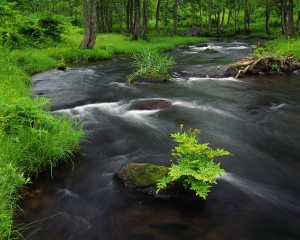Entering the state of flow- not as hard as you may think.
This is a very brief discussion of aspects of what is called “the flow experience or the state of flow.” For many creative endeavors can be generally addictive for a very good reason. Being creative and in the creative moment contributes to the sensation of being in a state of full concentration or hyper-concentration and this feeling, this mental state, is both pleasant and productive. The author Mihaly Csikszentmihalyi devotes three works to explaining this state and to related topics. Flow can also be described as the “state of optimal performance.” He describes entering the state of flow as:
“Over and over again, as people describe how it feels when they thoroughly enjoy themselves, they mention eight distinct dimensions of experience. These same aspects are reported by Hindu yogis and Japanese teenagers who race motorcycles, by American surgeons and basketball players, by Australian sailors and Navajo shepherds, by champion figure skaters and by chess masters. These are the characteristic dimensions of the flow experience:
1. Clear goals: an objective is distinctly defined; immediate feedback: one knows instantly how well one is doing.
2. The opportunities for acting decisively are relatively high, and they are matched by one’s perceived ability to act. In other words, personal skills are well suited to given challenges.
3. Action and awareness merge; one-pointedness of mind.
4. Concentration on the task at hand; irrelevant stimuli disappear from consciousness, worries and concerns are temporarily suspended.
5. A sense of potential control.
6. Loss of self-consciousness, transcendence of ego boundaries, a sense of growth and of being part of some greater entity.
7. Altered sense of time, which usually seems to pass faster.
8. Experience becomes autotelic: If several of the previous conditions are present, what one does becomes autotelic, or worth doing for its own sake.“
The Evolving Self – Mihaly Csikszentmihalyi, 178-179
Books on the “flow” experience:
(As these hotlinks take readers to Amazon, the FTC requires me to indicate that they qualify as ads) )
- Csikszentmihalyi, M. (1990) Flow: The psychology of optimal experience. New York: HarperCollins. (Link to updated edition from 2008)
- Csikszentmihalyi, Mihaly (1994) The evolving self. New York: Harper Perennial.
- Csikzentmihalyi, M. (1996) Creativity: Flow and the psychology of discovery and invention. New York: Harper Perennial.(Link to updated version 2013)
- Csikszentmihalyi, Mihaly (1998). Finding flow: The psychology of engagement with everyday life. Basic Books
Think about what Csikszentmihalyi has said to describe entering the state of flow:
1. Can you think of any times in your own life when you have been in a state of complete hyper-concentration, both physically and mentally hyper-focused on a task, activity, product, or process?
2. What were those times?
3. What conditions existed or had to exist in order for you personal state of flow to occur?
Barriers to entering the state of flow in schools have to do with imposing restrictions on time limitations, as well as well as how adults insist that children use time. In surmounting those challenges and because flow experiences are also very productive:
- See if you can structure experiences so that students have enough time to create states of hyper-concentration so that they can really be productive and enjoy learning.
- List some changes you might be willing to make or can make in setting up educational experiences which promote white moments or flow experiences.
- Observe students’ attitudes, levels of concentration, products if they are allowed to enter a state of flow and fully engage in creating a product or in exploring a problem.
- And then be sure to discuss entering the state of flow and why it is important with both peers and your students.
Next pages – Finding your creative muse, and Caring for your creative muse
Online links to articles on flow & creativity and creative processes
- TED Talks – Flow: the secret to happiness by author Mihaly Csikszentmihalyi
- Adam Grant – Stop languishing and start finding flow
- MindValley Talks – How To Get Into The Flow State | Steven Kotler
Ideas –
- The key to productivity is tapping into your flow state. Here’s how
- Positive Psychology – An article by Mihaly Csikszentmihalyi
- On the flow experience from Psychology Today
- Understanding the flow experience from VeryWell
Original materials on this site are copyrighted to Leslie Owen Wilson – e-mail

